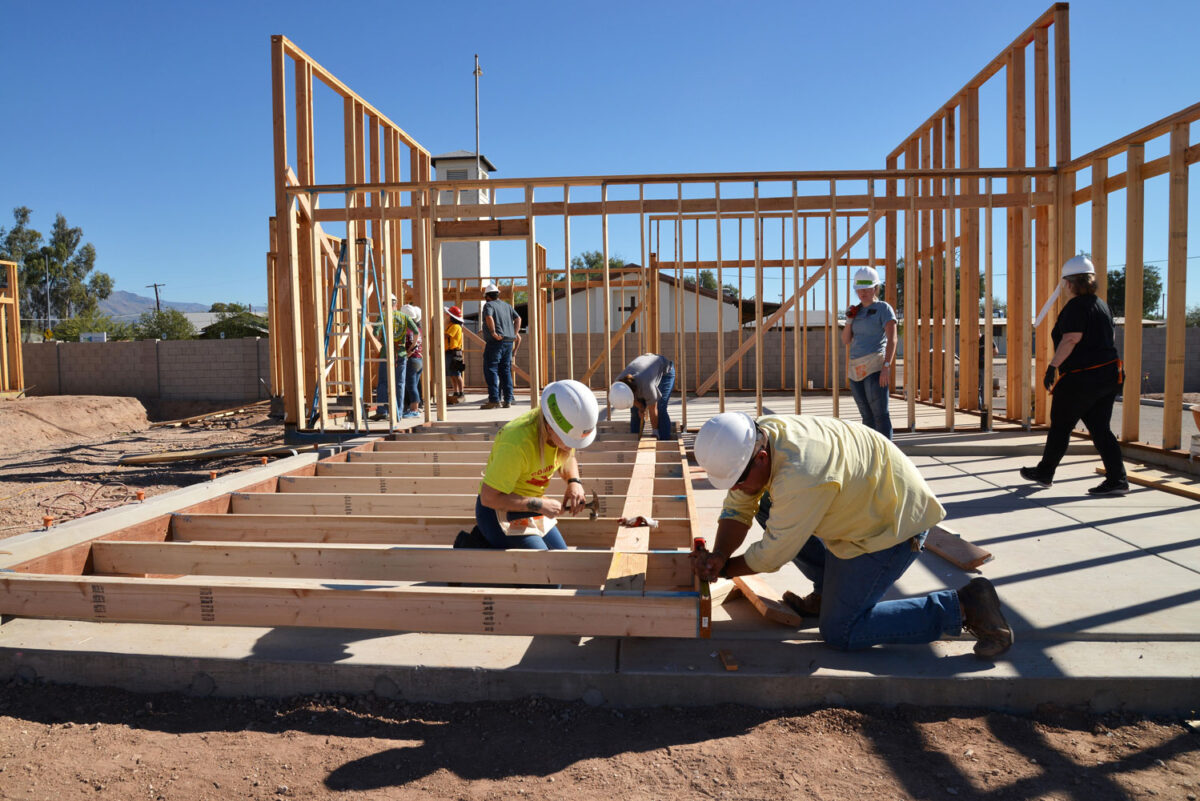In the United States, where over 80 percent of the population lives in cities, a national housing plan is a housing plan for cities. Housing shortages are pervasive across the country—Zillow has estimated a 4.5-million-unit shortage nationwide. And while they are especially acute in coastal metropolitan areas, like Portland or Boston, even markets in the middle of the country, like Austin and Denver, have deep housing deficits. Renters, who are often more vulnerable to the winds of housing market fluctuations, tend to make up more than 50 percent of residents in cities. Right now nearly half of all renters pay more than 30 percent of their income on housing and the number of unsheltered individuals has ticked up since the pandemic by nearly 16 percent. The housing crisis is so severe that it cannot be properly addressed without the heft of federal financing. Solving the problem requires a scale of resources that cities just don’t have on their own.
For cities, demand for housing is typically not the problem—people flock towards cities for jobs, amenities, and services. Rather, the root of the affordability crisis is the lack of housing supply. Housing takes time and great resources to produce at the scale needed to relieve pressure on prices. That is why mayors all over the country are keeping a close eye on the national housing platforms proposed by the presidential candidates. They’re making calculations and plans for how their locality can leverage this reinvigorated commitment from the federal government. For example, Vice President Kamala Harris’s proposal to expand the Low-Income Housing Tax credit and to open up other tax incentives to spur the development of housing, especially in distressed markets, should serve urban localities and their surrounding metro areas very well. Former President Donald Trump’s proposals are less forthcoming with details, but also mention tax incentives for first-time homebuyers. However, his strategy would only help affordability in cities if more supply is simultaneously built in the same location to absorb the people who want to transition from renting to ownership.
The fanfare of a national housing policy, however, should be tempered by the fact that most contemporary housing policy in the US is actually formulated and implemented by states and local municipalities. Zoning is perhaps the most important determinant of where, how much, and what kind of housing gets planned and produced. And zoning is squarely under local jurisdiction (where municipalities operate within the context of rules set by the states). The federal government has very few levers over local land use and zoning. It has been documented time and time again that restrictive land use regulations are one of the most notorious drivers of sluggish housing production and increasing housing costs. This is particularly true when looking at the under-supply of denser rental, multi-family housing (the type of housing most likely to constitute the more affordable stock for lower- and moderate-income households).
So how do the proposed national housing plans take into account this particular supply crisis in the context of US cities? For the most part, proposals from both candidates are a-spatial—there is no clear recognition of where, geographically, more housing is needed to address the affordability crisis. Both Harris and Trump talk about using federally owned lands to build new housing, but much of that land is far from high-cost cities.
Both Harris and Trump recognize the procedural and regulatory barriers to increasing housing supply at the local level. Harris has proposed a $40 billion “innovation fund” to support local strategies for building and financing housing production. Much of the (evidence-based) logic behind these ideas is that any supply, even market-rate units, will help to relieve excessive housing costs across the board. Trump’s policy details have been thin in this area as well, and his remarks have often focused on environmental regulations rather than density-related zoning codes. The biggest concern for any proposal, however, is that housing and land use regulations are so heterogeneous and particular to specific localities. It is hard to imagine how federal rules can be both nationally applicable and targeted enough to disrupt the city-specific regimes that have constrained housing production for decades.
A national housing platform is long overdue, and let’s hope it remains at the top of the national agenda after the election campaigns transition into governance and policymaking. However, it’s crucial that local municipalities keep their eyes on the prize: if any federal initiatives are to move the needle at the local level, there still needs to be a serious reckoning among city officials and planners around where and how much housing gets built. Local governments often come up against “unfunded mandates”—policies or regulations imposed without the financial resources to implement them effectively. We may be in the opposite situation: a renewed federal commitment to funding and incentivizing housing affordability, but in the context of stubborn local roadblocks that prevent it from being fully realized. Local municipalities will need to keep doing the hard work of making sure resources flow from the perch of the federal government to the foundations of new and abundant housing.
Rachel Meltzer, PhD, is the Plimpton Associate Professor of Planning and Urban Economics at the Harvard Graduate School of Design.
